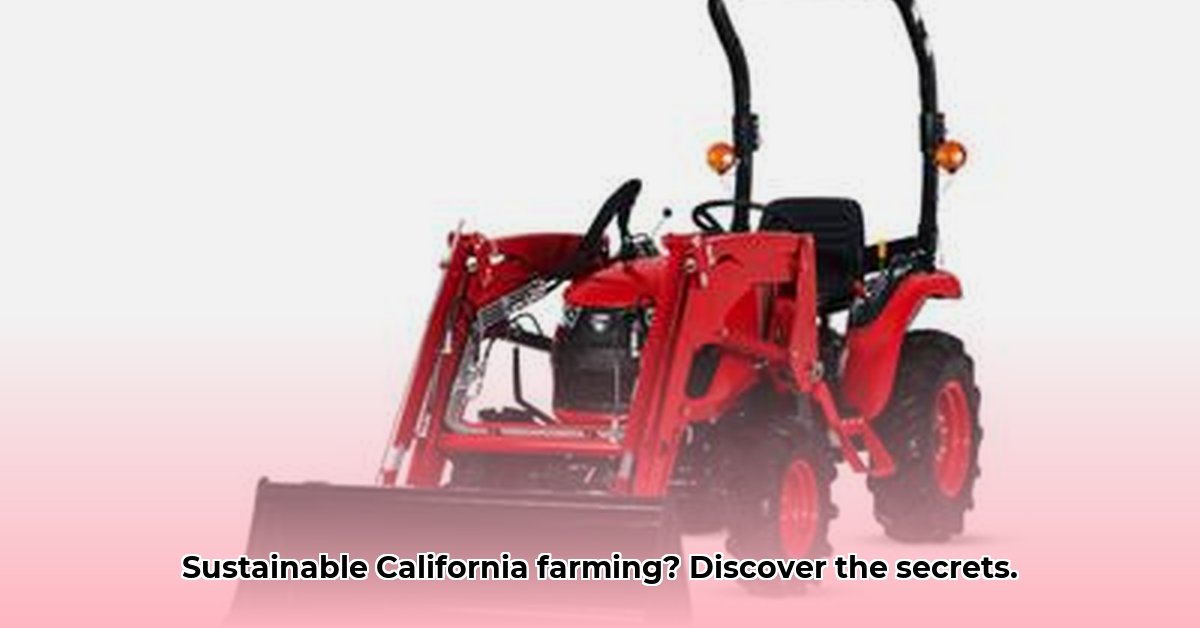
California's agricultural landscape presents unique challenges and opportunities. Water scarcity, stringent environmental regulations, and rapid technological advancements demand innovative solutions. Choosing the right tractor is crucial for farm success, requiring careful consideration of brands, technology, and market dynamics. This guide navigates the complexities of the California tractor market, offering insights for farmers, dealers, manufacturers, and policymakers. For water-efficient irrigation options, see this resource.
Key Players in the California Tractor Market
LS Tractor and TYM Tractor are prominent players, offering diverse models suited to California's varied terrains and crops. Their established dealer networks enhance accessibility for sales, service, and parts. However, a vibrant ecosystem of smaller companies specializing in sustainable technologies is also emerging. Large manufacturers often offer mass-produced reliability, while smaller players may excel in customized solutions tailored to specific farm needs. Thorough research is vital to match equipment to individual farm requirements.
Navigating the Distribution Channels
A robust dealer network is essential, forming a crucial link between farmers and the equipment they need. Dealers manage the supply chain, from sales to repairs. However, a significant challenge lies in the limited online information available. Websites may be difficult to navigate, pricing lacks transparency, and detailed model information is often scarce. This lack of readily accessible information significantly impacts smaller farms, creating an uneven playing field. Increased transparency through improved online resources is critical.
Technology and Sustainability: Shaping the Future
California agriculture's emphasis on sustainability is reflected in the latest tractor technologies. Electric tractors are gaining ground, offering reduced emissions and lower reliance on fossil fuels. Precision farming tools, such as GPS-guided spreaders and automated planting equipment, optimize resource use, maximizing yields while minimizing waste. Water-efficient irrigation systems are also becoming increasingly important. These technological advancements, while often involving higher initial investments, offer long-term benefits in profitability and environmental responsibility. The ongoing development of new technologies requires continued research and evaluation.
Challenges and Opportunities: A Market Overview
The primary challenge facing many farmers is the scarcity of readily available online information. Website navigation difficulties, unclear pricing, and a lack of detailed model specifications hinder informed decision-making. This issue disproportionately affects smaller operations with limited resources and time. Improving online transparency is crucial to foster fair competition and efficient market operations. Potential solutions include governmental initiatives to create standardized online databases or industry-led collaborations to develop more user-friendly platforms.
Actionable Insights for Key Stakeholders
The following table offers actionable advice for various stakeholders aiming to improve the California tractor market:
| Stakeholder | Short-Term Actions (0-1 Year) | Long-Term Actions (3-5 Years) |
|---|---|---|
| Dealers | Develop user-friendly websites, expand digital marketing, offer flexible financing options. | Invest in staff training on new technologies, strengthen manufacturer relationships for consistent product and service availability. |
| Manufacturers | Strengthen and expand dealer networks into underserved areas, design equipment for California's water challenges, adopt transparent pricing. | Invest in R&D for innovative, sustainable equipment, explore direct-to-consumer sales models. |
| Small-Scale Farmers | Join farmer networks, explore equipment leasing, advocate for policies supporting small farms and sustainable agriculture. | Invest in precision farming training, consider crop diversification. |
| Government | Provide subsidies or tax incentives for sustainable equipment, improve rural broadband access. | Fund research into water-efficient technologies and sustainable farming practices, implement policies promoting responsible land use. |
The Path Forward: A Sustainable Future for California Agriculture
The California tractor market is dynamic, with sustainable technologies rapidly gaining prominence. Addressing the lack of readily available online information is key to creating a more equitable market. Collaboration between farmers, dealers, manufacturers, and the government is essential for ensuring the continued prosperity of California agriculture. Embracing sustainable practices and technological advancements is crucial for a healthy planet and a flourishing agricultural sector. How can we incentivize the adoption of sustainable farming practices further?
Key Takeaways:
- California's unique agricultural challenges necessitate specialized equipment choices.
- Technological advancements in sustainable equipment, while costly, offer long-term environmental and economic benefits.
- Improved online information access is crucial for creating a fair market for all farmers.